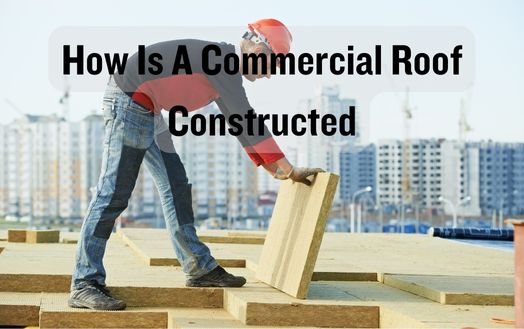
Did you know that commercial roofs are designed to last for an average of 20 to 30 years? It’s a fascinating statistic that highlights the importance of constructing a roof that is durable and built to withstand the test of time.
But how is a commercial roof constructed? In this discussion, we will explore the step-by-step process of commercial roof construction, from the initial design and planning to the final installation.
Along the way, we will also delve into the different types of commercial roofs, the materials commonly used, and the benefits of metal roofing for commercial buildings.
So, if you’re curious to learn more about the intricacies of commercial roof construction, keep reading to discover the key elements that go into creating a sturdy and reliable roof for your business.
Businesses can choose from several commercial roof types. Commercial roofing requires innovation. Business owners want a roof that protects them and adds value. Flat and metal commercial roofs are popular.
Flat roofs are popular in commercial buildings. Their sleek, modern design is ideal for innovative businesses. Flat roofs are versatile and offer easy solar panel and green roof installations. This makes them eco-friendly.
Another innovative commercial roofing option is metal. Metal roofs last and require little upkeep. They can withstand strong winds and heavy rain, making them a reliable business option. Metal roofs come in many styles and colors, allowing businesses to express their brand.
EPDM rubber roofing is popular in commercial roofing. This affordable option provides excellent insulation and energy efficiency. For long-lasting business protection, EPDM rubber roofs resist UV radiation, ozone, and extreme temperatures.
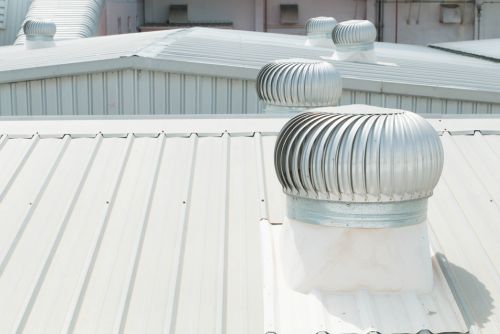
After reviewing popular commercial roof types, it’s time to discuss commercial roofing materials. Several durable and reliable materials are used for commercial buildings and flat roofs.
Built-up roofs are popular commercial roofing materials. This roof has multiple asphalt and felt layers for strength and waterproofing. Commercial buildings can trust BUR roofs because they last and can withstand harsh weather.
Membrane roofing is also common in commercial roofing. This thin, flexible material is applied to the roof in one layer. EPDM, TPO, and PVC roofing membranes are available. This membrane is UV-resistant and durable, making it ideal for commercial flat roofs.
Besides BUR and roofing membranes, commercial roofs can be built with metal, shingles, and spray foam. Shingles are traditional and attractive, but metal roofs are durable and energy-efficient. Spray foam roofs are superior in insulation and waterproofing.
Commercial metal roofing has many benefits. Metal roofing should be your first choice for a commercial roof. Modern design and construction give metal roofing many benefits that can improve roof performance and longevity.
Metal roofing has four main advantages for commercial buildings:
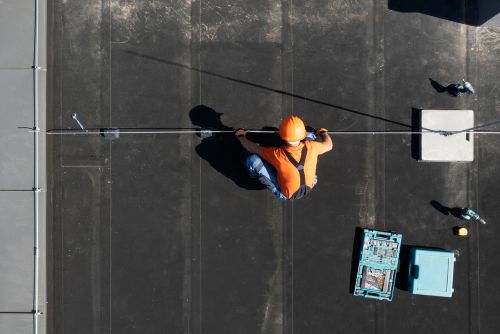
Commercial roof construction requires careful planning and preparation. A strategic approach to commercial roof construction ensures durability and aesthetics. The first step is choosing the best commercial flat roof design for the building. The building’s size, location, and use must be considered.
After finalizing the commercial flat roof design, choose a roofing system. Built-up roofing, modified bitumen, and single-ply membranes are options. It’s important to choose a system that meets the building’s needs because each has pros and cons.
Construction begins after design and roofing system selection. This usually involves these steps:
Let’s examine how roofing design and planning affect commercial roof construction. Proper design and planning are crucial when building a commercial roof. A successful and efficient roofing system starts with it.
Roof design and planning are important for four reasons:
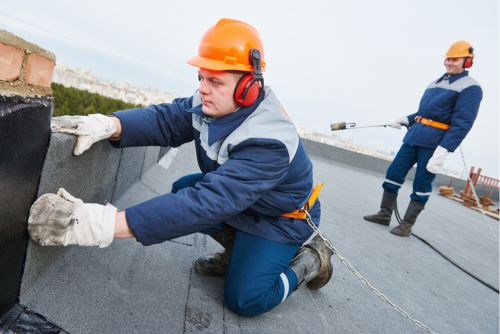
What should go into choosing a commercial roofing system? Read more to know how is a commercial roof constructed.
When building a commercial roof, an engineer or architect must consider durability, cost, and innovation. Material selection is crucial to these goals.
Consider corrugated galvanized steel. Its strength and durability make it ideal for commercial roofs that may be exposed to harsh weather or heavy loads. Its corrugated design is strong and easy to install and maintain.
Multi-layer ply roofing is another option. Leak protection and insulation are improved with this roofing system. Ply roofing is versatile and can be customized to fit architectural designs.
Also consider the built-up roofing system. Multiple layers of bitumen and reinforcing fabric make this system resistant to foot traffic and extreme weather. Built-up roofing is durable and long-lasting, which is important in commercial roofing.
Consider durability, cost, and innovation when choosing a commercial roofing system. Engineers and architects can ensure commercial roofs meet these criteria by considering corrugated galvanized steel, ply roofing, and built-up roofing. Long-lasting protection and commercial building project success depend on the right roofing system.
Engineers and architects choosing a commercial roofing system should understand built-up roofing membrane (BUR) systems’ benefits and characteristics. Durable and long-lasting BUR systems have been used in commercial roof construction for years.
Four things to remember when studying BUR systems are:
Architectural and engineering firms seeking innovative commercial roof construction solutions must understand built-up roofing membrane systems. BUR systems are reliable for industrial roofing projects due to their durability, energy efficiency, versatility, and professional installation.
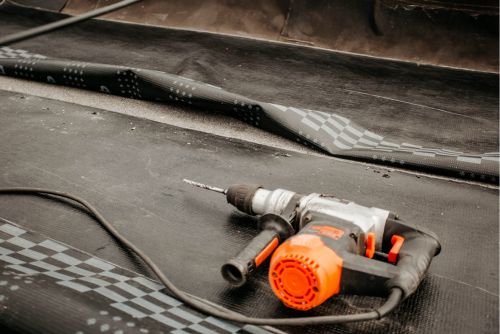
I’m excited to share my research on commercial single-ply roofing systems.
Innovative commercial roof construction uses single-ply roofing systems. These innovative systems use a single roofing membrane layer installed directly on the roof. A durable and waterproof membrane protects the building from the elements.
Easy installation is a major benefit of single-ply roofing systems. Installing the membrane is easy due to its light weight and flexibility. This reduces construction time and cost. Single-ply roofing systems work with metal, concrete, and wood roof substrates. This versatility makes installation in many commercial buildings easy.
Durability is another benefit of single-ply roofing. The membrane can withstand high winds, rain, and extreme temperatures. The roof will remain watertight and secure for years due to its durability. Single-ply roofing systems also resist UV rays, chemicals, and pollutants, extending their lifespan.
Commercial roofs need insulation for energy efficiency and climate control. When designing a commercial roof, engineers and architects must carefully consider insulation options.
Consider these four creative options:
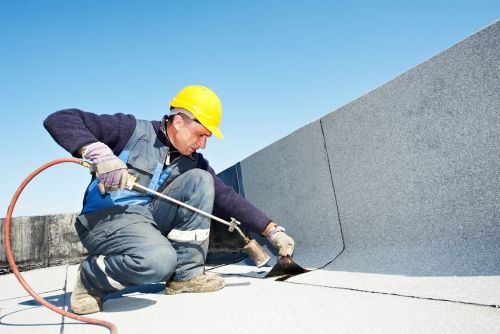
Commercial roofs must be maintained and repaired to last and prevent damage. After understanding how a commercial roof is built, regular maintenance is essential for optimal performance. Commercial roofing systems are weatherproof but still need maintenance.
Commercial roof maintenance requires regular inspections. These inspections detect leaks, cracks, and weather damage. These issues can be fixed early to avoid costly repairs or roof replacements. Roof inspections are now more efficient and thorough, using drones with thermal imaging cameras. These advances enable detailed roof analysis and proactive maintenance and repairs.
Work with commercial roofing system experts for roof repair. They can find the problem’s cause and offer effective solutions. Repairing a roof may involve patching leaks, replacing materials, or strengthening weak areas.
Sometimes a roof must be replaced. This may be due to extensive damage or an aging roof that no longer protects. When replacing a roof, consider innovative options that improve durability and energy efficiency. Cool and green roofs offer advantages over traditional roofing systems.
Commercial roofing professionals are adopting new materials and methods to boost energy efficiency and sustainability. These innovations are changing commercial roofing in four ways:
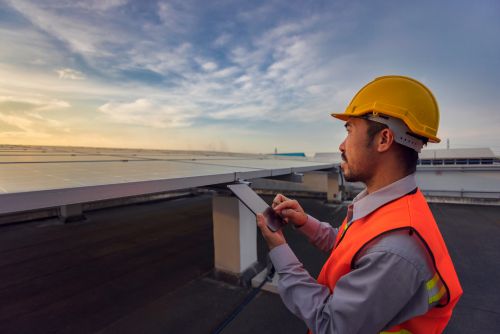
Warranty and insurance options are crucial to protecting your commercial roof investment. Commercial roof construction requires many considerations. Engineers and architects must choose durable roofing materials. However, even the best materials can fail, so a comprehensive warranty is essential.
A warranty gives you peace of mind that the manufacturer or installer will fix any roof issues. Study the warranty’s terms and conditions. Search for a warranty that covers both materials and installation. This protects you from unexpected issues during or after construction.
Insurance is important for commercial roofs, along with warranties. Roof insurance covers damage or loss. Working with an insurance provider who understands commercial roof risks and can customize a policy is crucial.
Consider coverage limits, deductibles, and exclusions when buying insurance. Find a policy that covers fire, water, and extreme weather. Additional coverage for local risks should also be considered.
It’s crucial to thoroughly vet commercial roofing contractors before hiring them. You want a contractor with the skills and precision to build a commercial roof.
When hiring a commercial roofing contractor, consider these four factors:
In conclusion, constructing a commercial roof requires careful planning, choosing the right materials, and hiring a professional contractor. Proper design and maintenance are essential for the longevity and efficiency of the roof.
Metal roofing offers numerous benefits for commercial buildings, including durability and energy efficiency. Considering warranty and insurance coverage is also important.
Now you already know how is a commercial roof constructed. By following these steps and seeking professional help, commercial roofs can be built to withstand the elements and provide long-lasting protection.
A commercial roof construction project can be expensive. The cost depends on roof size, materials, and design complexity. We recommend getting multiple quotes from reputable contractors to ensure a fair price.
Innovative roofing technologies like energy-efficient materials or solar panels may cost more upfront but save money and the environment over time.
The most common problems that can occur with a commercial roof are leaks, ponding water, and damage from severe weather. Leaks can lead to water damage and mold growth, while ponding water can cause structural issues and deterioration. Severe weather, such as high winds and hail, can result in roof damage and the need for repairs.
Regular roof inspections and maintenance can help identify and address these issues before they become major problems.
Commercial roof construction requires the following building codes: Location and jurisdiction affect these codes and regulations. They address structural integrity, fire safety, insulation, and drainage.
These regulations must be followed for commercial roof safety and durability. Building code compliance helps avoid legal issues and penalties.
The average commercial roof construction project takes weeks. The timeline depends on building size, weather, and design complexity.
However, careful planning and a skilled construction team can speed up and finish the process.
Commercial roofs can be installed over existing roofs. First, inspect the old roof. If the old roof has leaks or structural damage, remove it before installing the new one. Doing so ensures a solid foundation and prevents future issues.